In 2004 Vincent de Graaf and Wendy Saunders took a train to Shanghai and never left. In AIM they are building a legacy of architecture that merges the classicism of Europe and cultural traditions of China. Their style? Distinctly individual.

Left, Vincent de Graaf and right, Wendy Saunders of AIM Architecture.
April 12th, 2023
This article first appeared in Indesign magazine #87, purchase here or subscribe.
With an office in Shanghai, China and another in Antwerp, Belgium, AIM Architecture (AIM) has the best of both world’s when it comes to working and living design. With the classical architecture of Europe and the cultural traditions that China presents, a merging of these two worlds help influence the architecture and interiors of AIM, and the result is both compelling and original.
The studio is led by two gifted practitioners, Wendy Saunders from Belgium and Vincent de Graaf, Netherlands-born, who both studied architecture and architecture/interior architecture respectively in their home countries then met in Amsterdam. As a couple, they were seeking adventure and so in 2004 they gave up their jobs and decided to take the train across country to Shanghai and, well, never left China.
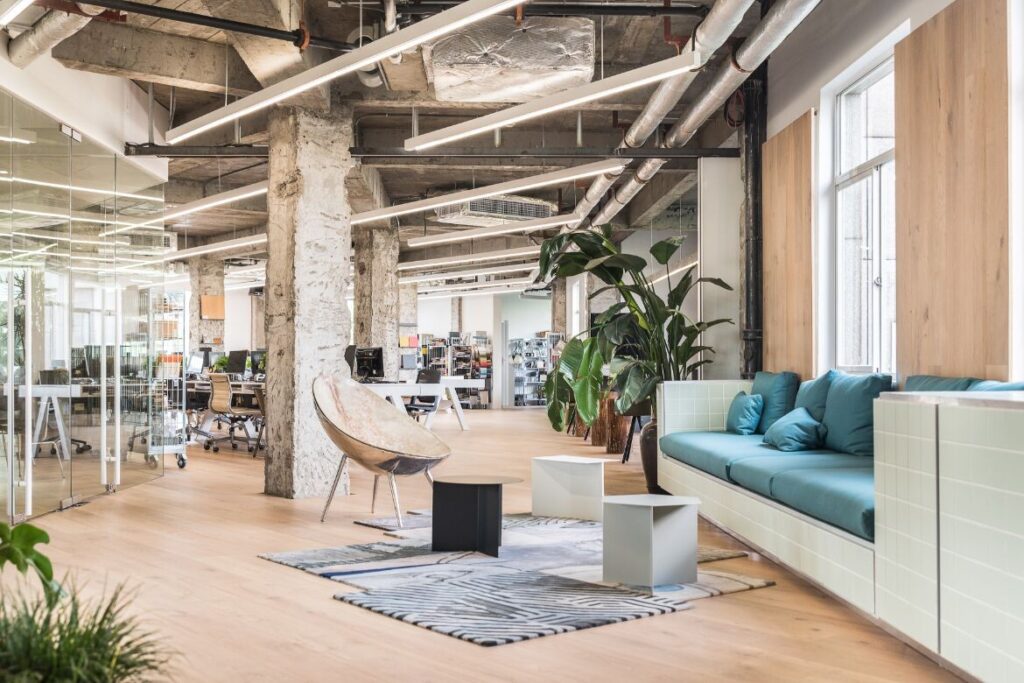

AIM’s Shanghai office.
It takes a certain openness to change, courage and an inquisitive nature to move to such a culturally different country but the pair fell in love with the energy and vibrant nature of Shanghai where it felt that “anything was possible” and set about finding work. Each commenced positions that gave them a taste of working life in China but there were limitations to climbing the ladder. After a year they decided to create their own destiny and left their positions to establish their own practice. With the patronage of a past client, a developer, AIM Architecture was born and off to a flying start.
In 2005, China was the new frontier for design with a plethora of large companies and practices setting up offices investing in the country. It was a good time to be working in China with the buzz of development and change in the air. AIM was small and agile with a new sensibility that set it apart from other architecture practices and, from the outset, the process and design-thinking of AIM was different to the norm. Initially there were lots of competitions to help the fledgling practice make a name for itself, then the first project, a gallery that put AIM on everyone’s design radar. Relationships were made and eventually the commissions came rolling in and AIM’s new perspective on creativity became its signature.


Soho Lobby, Shanghai, photography by Dirk Weiblen.
Fast forward to 2022, where AIM is now a world-renowned architecture and interior design practice with a studio of some 40 people and connectivity to dozens more professionals across the globe. Their work is original, almost breathtaking in the re-interpretation of design that speaks for itself, as each project is particular to the brief. However, the continuum between each project is the inspiration to activate a space and a curiosity to always improve.
The ‘style’, if you can call it that, is neither European, Chinese, or hybrid but individual. There is a critical understanding of space and how to engage with and translate dimension to better assist the idea of a project. The experiential is always of prime consideration and the concept incorporates a freedom of expression that is articulated through each design.
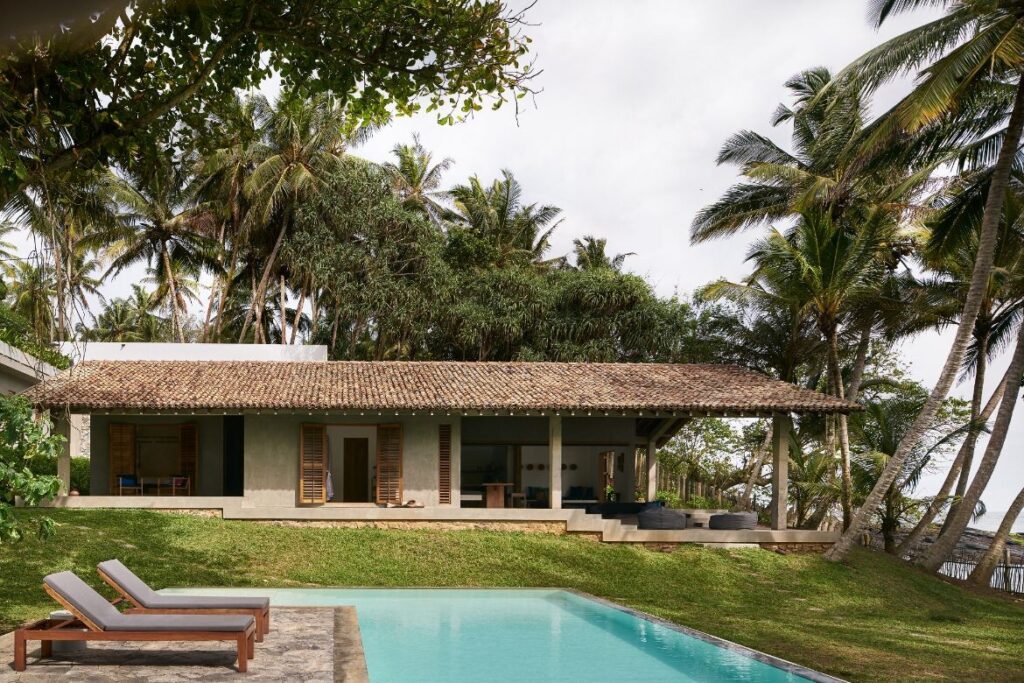
K House, Sri Lanka.
Saunders comments: “Working in China forces you to think differently. It forces you to maybe abandon a little bit, or reinvent yourself, or reinvent the principles that you thought were always right. I think if we would have stayed in Europe, we would have become different architects but here in China we have been forced to rethink how we can fit our principles or our design philosophy into a world that is super-fast changing and super demanding.”
Yes, China is constantly changing but this power-packed practice is sensitive to culture, perhaps not in the traditional ways of furnishings and motifs, but by taking ideas of old and re-inventing and incorporating them into their projects. When Saunders first arrived in China she was struck by the duality of life – the grittiness of living and working on the street juxtaposed with the glitz and glamour of Shanghai nightlife. It is these two aspects that inform the design of projects today, the grit and the gloss together, as well as the intersection with landscape and connectivity between people.
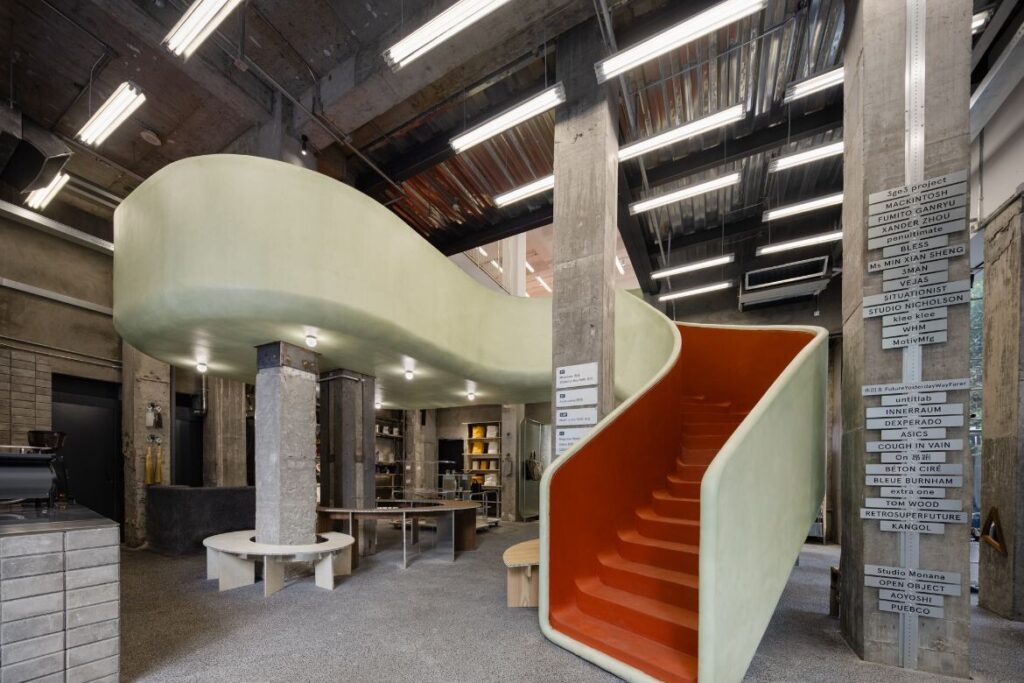



Joyce Beauty, Shanghai, photography by Wen Studio.
Take projects such as those designed for Harmay, a beauty retailer that began its business online. Moving into the physical arena, Harmay commissioned AIM to design stores that would represent the brand, where it came from and where it was going. The design of each store is a standout, creating a unique offering in the overcrowded retail environment. Combining the imperatives of retail design with a warehouse sensibility, each store is bespoke and also takes into account the site and demographic. At last count there were eight stores already completed with more on the drawing board.
Then there is the beautiful Taoxichuan Hotel of the Unbound Collection by Hyatt, a reflection of place incorporating and showcasing the porcelain that comes from the surrounding area. Here materiality and colour create a hotel that is distinct and unique but has deep roots to its location.


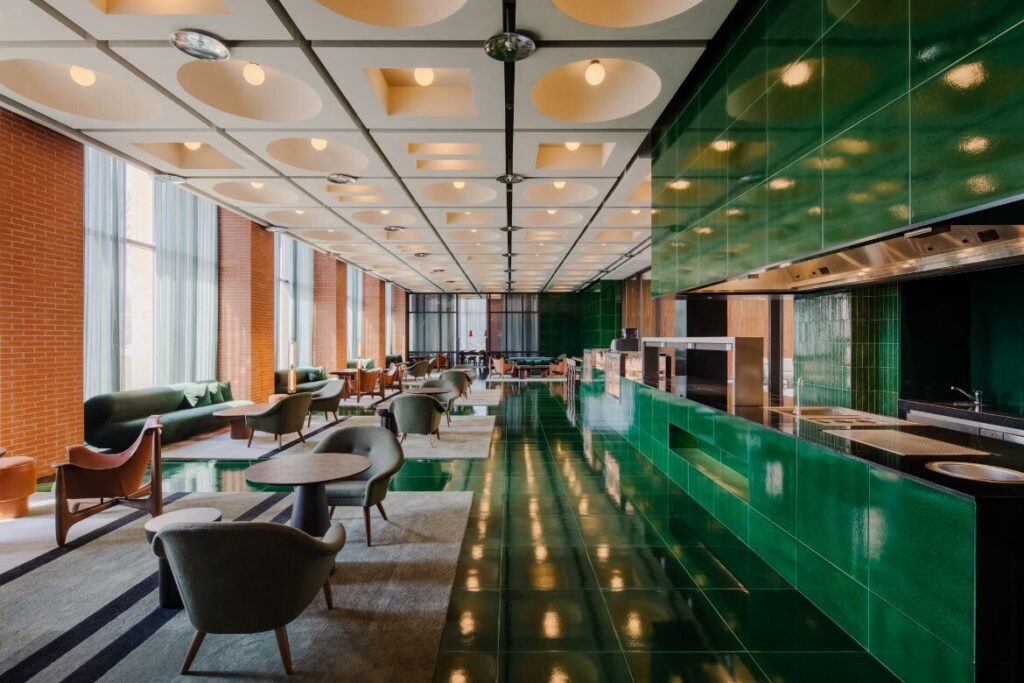

Taoxichuan Hotel of the Unbound Collection by Hyatt, photography by Wen Studio.
With a surfeit of completed commissions under its belt, AIM presents design that is appropriate yet thought-provoking. Working within the cultural, planning, hospitality, commercial, retail and residential sectors, the practice utilises its expertise in both architecture and interiors to forge a distinct identity.
Recently the F.X. Mayr Wenzou project was recognised in the WAF shortlist, received an ELLE Decoration China award and was named overall winner of the MIPIM/AR Future Award. Various other projects such as the Harmay Beijing Flagship store and In the Park have also received accolades this year and last, and this is just the tip of the iceberg when speaking of awards that the practice has received.
Related: Harmay serves up beauty with a twist


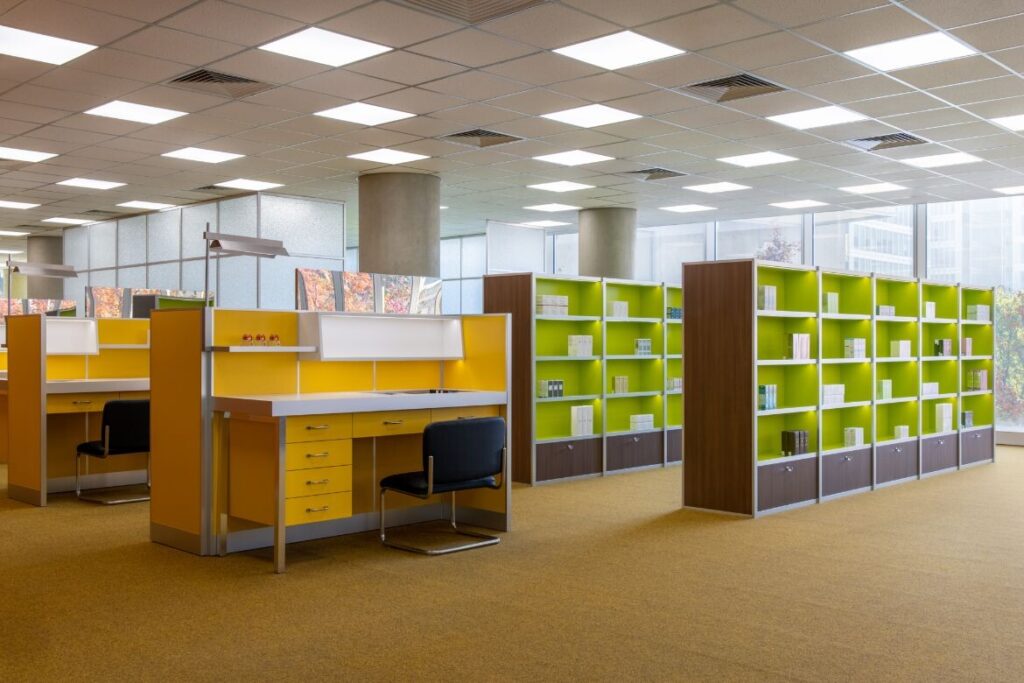

HARMAY OoEli Hangzhou store, photography by Wen Studio.
Saunders and de Graaf are two very different people – yin and yang – each complementing the other, together making a whole. Saunders is more involved with concepts and creating spaces while de Graaf is intent on building, materials, detailing and making. It’s a great combination that ensures AIM is always busy, positioned at the forefront of global design.
The overland train journey from Europe all those years ago coupled with a thirst for adventure has indeed paid dividends for Saunders and de Graaf with AIM an integral architectural practice in China. It leads the way with exciting design that just keeps pushing the boundaries on every level and, as design lovers, we are all the beneficiaries.
AIM Architecture is nominated for The Luminary category at INDE.Awards 2023. The INDE.Awards Luminary 2023 is proudly partnered by Woven Image.
AIM Architecture
aim-architecture.com
This article first appeared in Indesign magazine #87, purchase here or subscribe.
A searchable and comprehensive guide for specifying leading products and their suppliers
Keep up to date with the latest and greatest from our industry BFF's!

The Man x Machine x Material collaboration by Jarrod Lim and The American Hardwood Export Council explores how generative AI can enhance design processes while also revealing the areas where human intuition remains irreplaceable.

BLANCO launches their latest finish for a sleek kitchen feel.

With the exceptional 200 Series Fridge Freezer, Gaggenau once again transforms the simple, everyday act of food preservation into an extraordinary, creative and sensory experience, turning the kitchen space into an inspiring culinary atelier.

In this candid interview, the culinary mastermind behind Singapore’s Nouri and Appetite talks about food as an act of human connection that transcends borders and accolades, the crucial role of technology in preserving its unifying power, and finding a kindred spirit in Gaggenau’s reverence for tradition and relentless pursuit of innovation.

The John McAslan + Partners Sydney studio lead and director writes on the importance of transport infrastructure.

Architectus Conrad Gargett’s revitalisation of Africa Hall in Addis Ababa traces lines of historical, cultural and architectural significance.
The internet never sleeps! Here's the stuff you might have missed

In northern Portugal, Studio Nicholas Burns has completed a refined and graceful winery building with rich local connections and a quiet landscape setting.

Recognisable for its illustrious portfolio throughout Asia, Lanson Place Hospitality Management Limited introduces its inaugural Australian property opening in September.